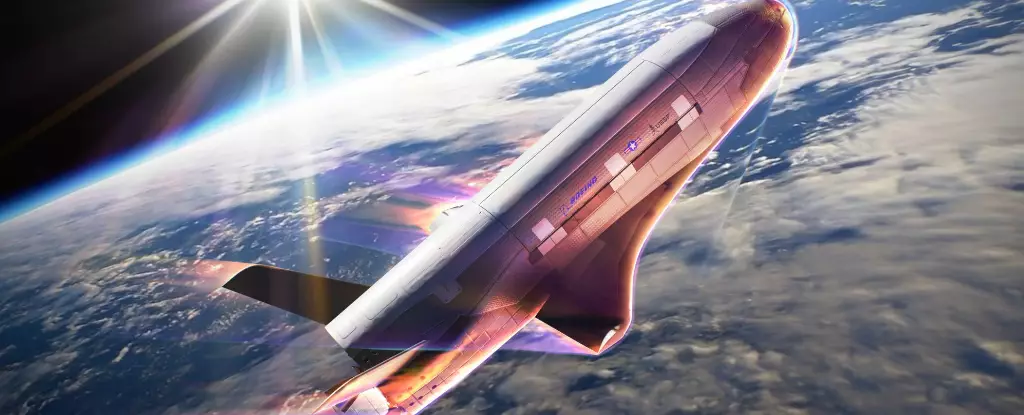The launch of the X-37B Orbital Test Vehicle (OTV) has been a fascinating topic since it first took to the skies in 2011. Conceived by Boeing and currently operated by the United States Space Force (USSF), this unique, robotic space plane is engineered to operate in the low Earth orbit (LEO) between 240 to 800 kilometers (150 to 500 miles) above the planet’s surface. This cutting-edge vehicle is utilized to trial reusable spacecraft technologies aimed at fulfilling long-term space exploration ambitions. As of December 29, 2023, the X-37B is on its seventh mission (OTV-7), focusing on integral experiments related to space radiation and advancements in Space Domain Awareness (SDA) technologies.
The OTV-7 mission is noteworthy for several reasons, particularly for incorporating innovative maneuvers that will alter its Earth orbit. The X-37B intends to utilize a technique known as “aerobraking,” whereby it will skim the edges of Earth’s upper atmosphere to slow down and shift its orbit with minimal fuel consumption. Such a method is not just an efficiency booster; it also introduces a tactical edge, allowing the spacecraft to operate under the radar. This kind of maneuver is revolutionary for the X-37B as it marks the first utilization of aerobraking in its operational history—an approach that has been successfully implemented in past missions to Mars with other spacecraft.
Secretary of the Air Force Frank Kendall emphasized the importance of this tactical maneuver, describing it as a significant milestone for the USSF in their ongoing mission to adapt and thrive amid the complexities of space operations. Chief of Space Operations Gen. Chance Saltzman echoed this sentiment, praising the dedication and innovation of the team behind the operation.
There is considerable intrigue surrounding the X-37B, particularly regarding its stealth capabilities. Former USAF Secretary Heather Wilson commented during the 2019 Aspen Security Forum on the vehicle’s ability to employ unconventional orbits, vague enough to keep adversaries guessing. The craft’s unpredictable flight path is not merely theoretical; it represents a practical strategy that can cause complications for those attempting to track it. Jonathan McDowell, an astronomer, added that the X-37B’s ability to dip into the atmosphere alters its trajectory in a way that throws off tracking predictions, adding another layer of complexity for rival nations monitoring U.S. activities in space.
This obscurity in function and purpose heightens the efficacy of the X-37B as a national security asset. It represents an ingenious fusion of advanced technology and strategic thinking, aimed at not just outpacing adversaries but also confounding their tracking capabilities, thereby creating a competitive advantage in the rapidly evolving domain of space.
Beyond its military applications, the X-37B is committed to a variety of scientific experiments during its missions. Among these is the “Seeds-2” experiment, aimed at investigating the effects of space radiation on various plant seeds. Such research could have far-reaching implications for future space colonization efforts. The spacecraft also plans to release components from its service module for adherence to internationally recognized space debris mitigation standards—a responsible move in the pursuit of sustainable space operations.
The juxtaposition of military metrics and scientific inquiry highlights the dual purpose of the X-37B, serving not only as an instrument of national defense but also as a platform for furthering our understanding of outer space. As technology rapidly progresses, this hybrid nature may become increasingly essential for navigating the complexities of future space endeavors.
As the current mission advances, the X-37B will continue executing pivotal experiments and tests, contributing to a wealth of knowledge and capabilities that the USSF seeks to leverage in an increasingly contestable spatial landscape. The lessons drawn from OTV-7 will likely inform future missions, enhancing America’s strategic posture in space while fostering a commitment to innovation.
In essence, the X-37B represents the intersection of exploration, science, and national security, standing as a testament to human ingenuity. As it embarks on this latest journey, it continues to solidify its role as a pivotal element in both the defense and the exploration of space, revealing a future where such vehicles may play an indispensable part in humanity’s endeavors beyond Earth.

